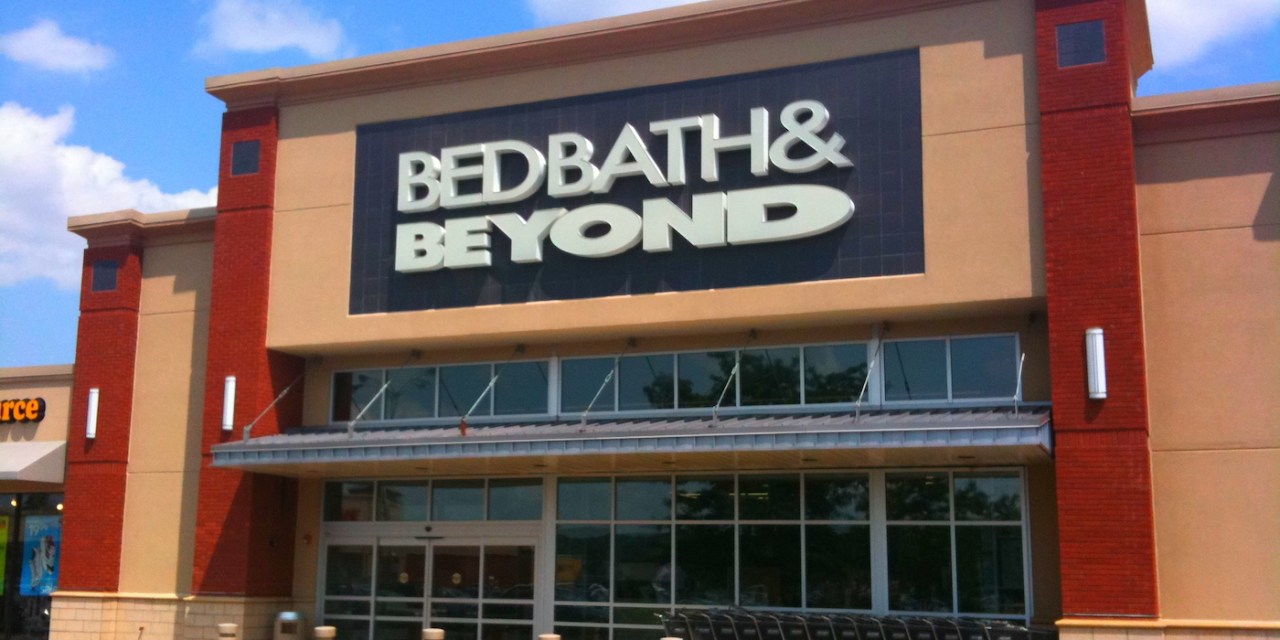‘I don’t know what they stand for anymore’: What went wrong at Bed Bath & Beyond

A blow-up is brewing at Bed Bath & Beyond.
This week, a group of activist investors announced their intention to try and replace Bed Bath & Beyond’s entire 12-person board, as well as the CEO, and to sell off underperforming assets. Bed Bath & Beyond issued a statement in response, defending its board, and said that “many of the areas highlighted by the Activist Group in its press release are already being addressed at a detailed level by the company.”
This clash between Bed Bath & Beyond and some of its investors has been a long time coming: Same-store sales at Bed Bath & Beyond have declined every single quarter for nearly two years. During the third fiscal quarter of 2018, net sales rose just 2.6 percent year over year, from $2.96 billion to just over $3 billion.
What’s happening can be boiled down to three issues at the heart of Bed Bath & Beyond’s woes: a confusing pricing strategy, outdated store design, and slowness to expand private-label offerings.
“I just don’t know what they stand for anymore,” Jane Hali, CEO of Jane Hali & Associates, said. “They have to have a target audience, and I don’t think they do.”
Bed Bath & Beyond’s advantage used to be its vast assortment: It carries a wide array of products in home furnishings, ranging from bedding to furniture to kitchen accessories. But that advantage has been eroded by online-only competitors like Amazon and Wayfair; if customers want to browse through seemingly endless product options, they’re not going to do so in stores like Bed Bath & Beyond’s.
“Consumers now want curated selections of product from which they can quickly select the best option. Many customers come into Bed Bath & Beyond on a mission with particular products in mind,” said Neil Saunders, managing director of GlobalData Retail. “The dense approach to merchandising and the vastness of the selection makes shopping hard and occasionally unpleasant.”
Having a retail strategy anchored on cramming as much product as possible into towering aisles, leaving customers to search them for what they’re looking for, is an outdated approach, and the quality is also on the decline.
Bobby Griffin, a specialty retail analyst for Raymond James, wrote in a note to investors on Tuesday that “we find too many of those stores cluttered, tired, and — in too many cases — dirty,” and “we also wonder how often the current senior management is in the legacy stores outside of New Jersey/New York.”
Redesigning the stores is a goal of Bed Bath & Beyond CEO Steve Temares. Temares wrote in an email to employees sent earlier this week and obtained by CNBC that the company plans to roll out 40 “working labs,” where it will test out new product layouts. But the activist investors said in a news release that they lack confidence in Temares’ plan, given that in the past, “management has lacked the ability to successfully implement initiatives that generate customer visits based on product or store experience.”
Online, the retailer isn’t faring much better. Like many of its competitors, Bed Bath & Beyond started investing heavily in building out its e-commerce business in 2013, causing its operating margins to fall. But, net sales didn’t increase fast enough to offset its investments. In 2016, Bed Bath & Beyond lowered its minimum shipping threshold from $49 to $29 in an attempt to increase sales even further, before raising it back up to $39. It’s emblematic of Bed Bath & Beyond’s continued struggle to wean itself off of a reliance of coupons and discounts in order to juice sales.
Underpinning Bed Bath & Beyond’s problems online and in stores is an inventory challenge that’s getting addressed too little too late. The retailer is only now making a long-overdue private-label push, selling affordable products customers can’t find on Amazon and Wayfair. The company rolled out Bee Willow Home, the first of these private-label brands, earlier this month.
But unlike some competitors, Target and Walmart, Bed Bath & Beyond hasn’t invested in or secured as many partnerships with digitally native brands. Bed Bath & Beyond did acquire online home furnishings retailer One Kings Lane in 2016, reportedly for less than $30 million. But while Walmart has used lessons from its acquisition of digitally native brand Bonobos to launch its own online-only brands, Bed Bath & Beyond hasn’t done the same, and it hasn’t made very clear what it’s taking from One Kings Lane and applying for its own business. Temares recently touted a new custom upholstery business that One Kings Lane launched in the fall as a way that the brand was pushing differentiation for Bed Bath & Beyond, but so far the company hasn’t said how much business it’s generating.
If the activist investors get their way, they’ve said that they’ll look to sell off non-core assets, like Buy Buy Baby, a children’s clothing store it acquired in 2007, and Cost Plus World Market, a specialty retailer it acquired in 2012. They’ve also released of 16 potential board members that they’d like to see Bed Bath & Beyond replace their current board members with, ranging from Alexander Smith, the former CEO of Pier 1 Imports, to John Fleming, the former CEO of Uniqlo.
Saunders said he does believe a shakeup is necessary. “Management has presided over these issues for far too long. There is nowhere near enough radical and creative thinking coming from the C-suite,” he said.
Photo by Mike Mozart on Flickr

